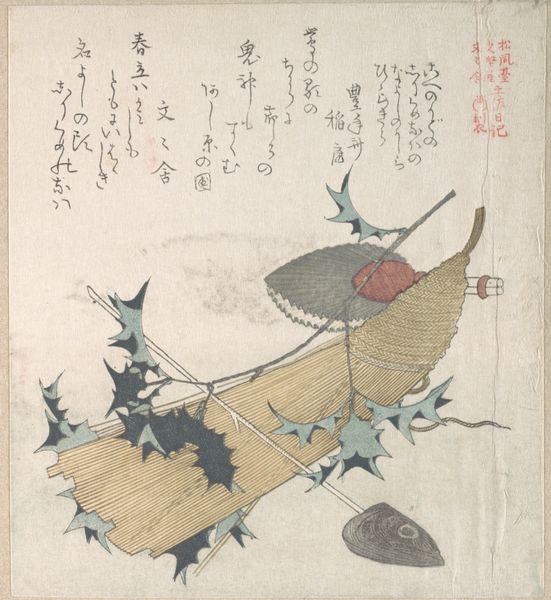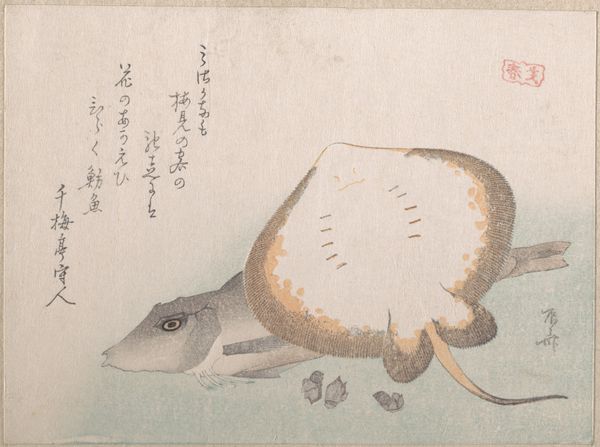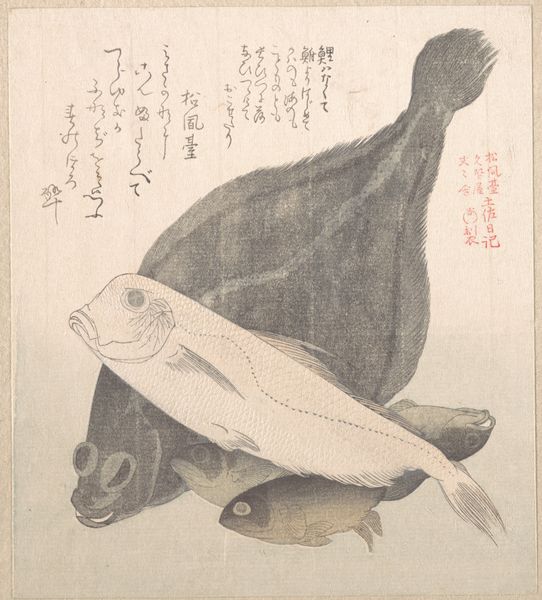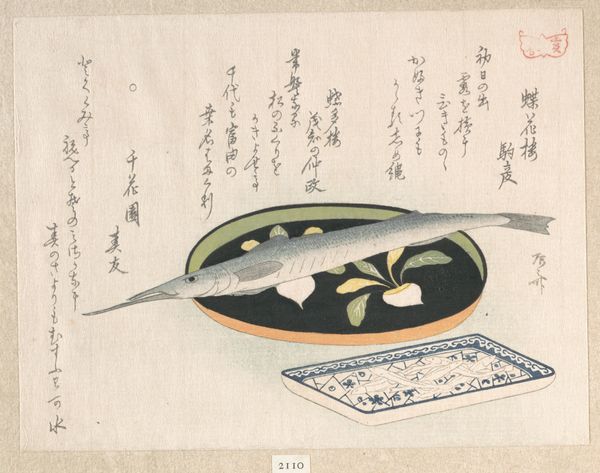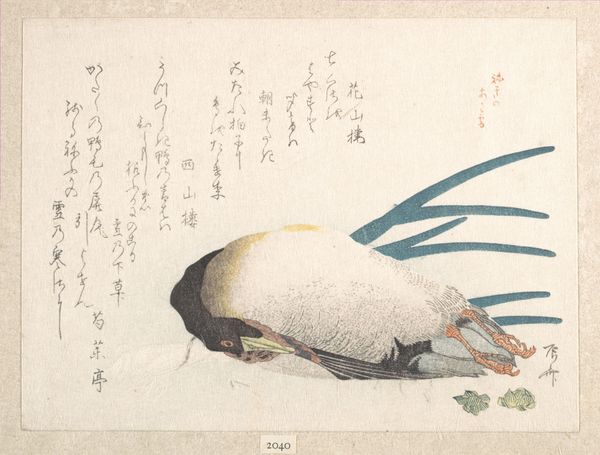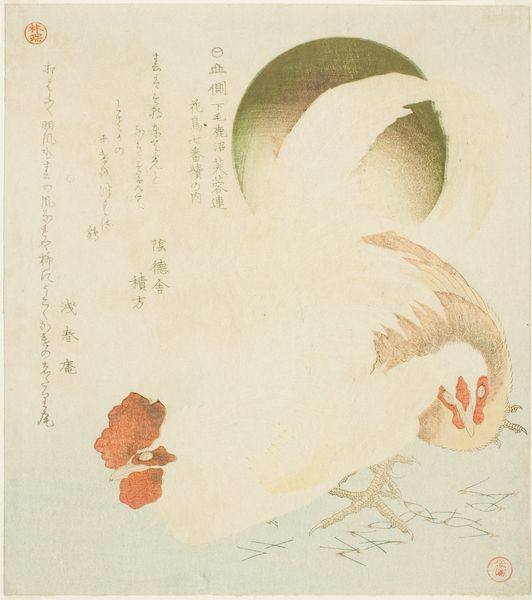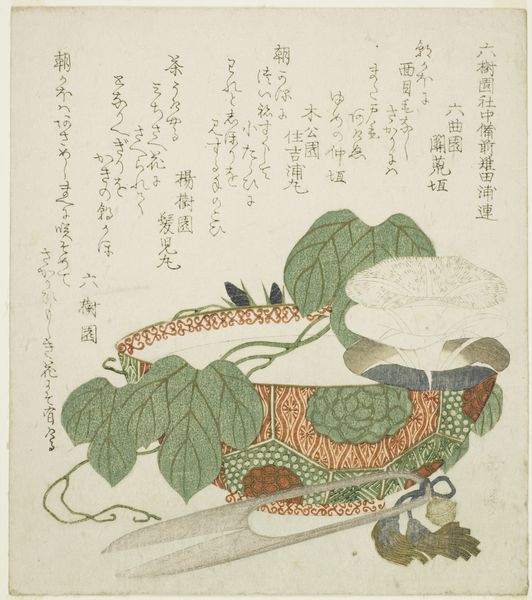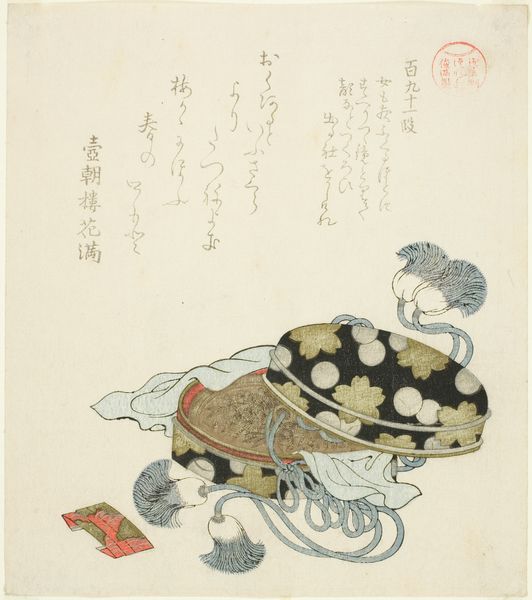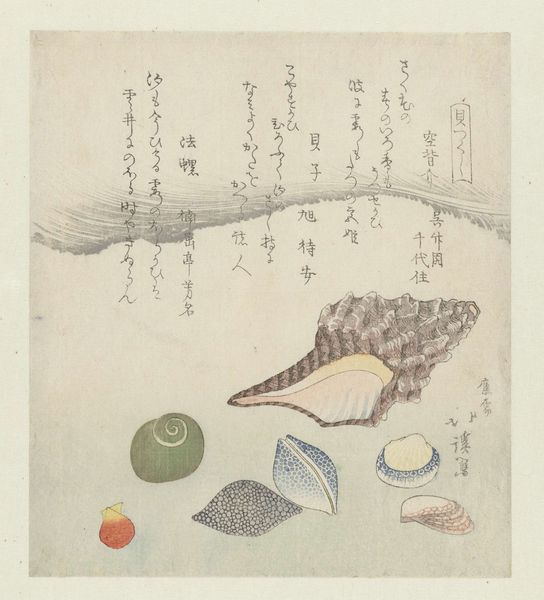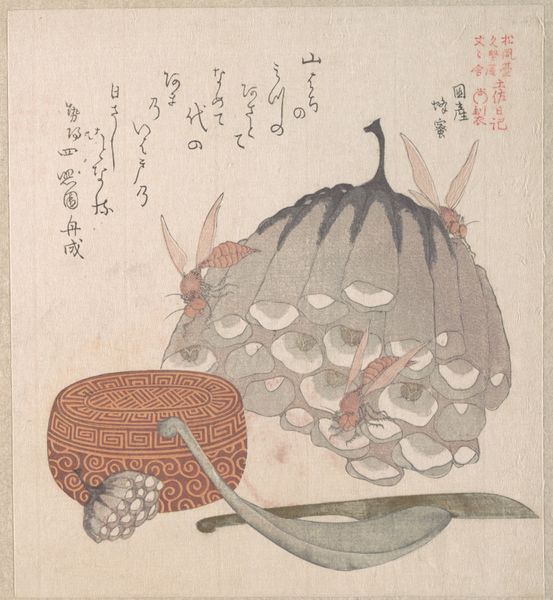
print, ink, woodblock-print
#
blue ink drawing
# print
#
asian-art
#
ukiyo-e
#
ink
#
woodblock-print
#
watercolour illustration
Dimensions: height 204 mm, width 174 mm
Copyright: Rijks Museum: Open Domain
This print, "Plevierschelpjes, rauwe mossel en brokaat schelp," was made by Totoya Hokkei in Japan, likely in the early 19th century, using woodblock printing. The technique, known as *ukiyo-e*, involves carving a separate block for each color, a labor-intensive process demanding meticulous skill. The velvety blacks and soft hues of the shells come from applying water-based inks to the blocks, then pressing them onto paper. Look closely, and you'll see subtle variations in the ink density, a mark of the hand involved. The subject matter - humble shells, a common food source – contrasts with the refined technique. *Ukiyo-e* prints were relatively inexpensive, made for a broad public. Hokkei’s work reflects the growing commercialism of the era, where art was no longer solely for the elite but circulated among a wider population. This print reminds us that even seemingly simple images are the product of skilled work, tied to broader social and economic forces. It challenges our assumptions about what counts as "high" art, inviting us to appreciate the artistry embedded in everyday objects and experiences.
Comments
No comments
Be the first to comment and join the conversation on the ultimate creative platform.



